As winter wears on, the passing of Groundhog Day has many people thinking about the arrival of spring. Even skeptics can’t be faulted for dreading Punxsutawney Phil’s shadow, but I’ve been watching for a different omen. I’ve been awaiting the arrival of the American robin, a traditional harbinger of spring in the United States.
But there’s a hitch. Recently, while gazing out my apartment window, I saw not just one robin but a flock of thirty or more visiting my neighborhood trees. Weirder still, these robins weren’t eating their standard springtime worms, they were noshing on late fruiting berries. Spring has certainly not arrived, so why have the robins?
To learn more about this behavior, I spoke to Elizabeth Howard, Founder and Director of Journey North. Journey North’s American Robin project is tracking robin movements across North America. She pointed out that robins, though they are considered migratory, don’t follow the typical north to south and back migration pattern we tend to associate with other migratory birds.
Robins in Winter
“Robins can withstand very cold temperatures,” Howard explains. “In most places you can see robins in the wintertime. You’ll see them wandering around and yet it’s not considered migration because basically they’re moving in a nomadic way, following the food.”
Many robins, especially those that remain in the northern states and southern Canada, change their diets in winter. Since worms and insects aren’t available, they search out trees that still have fruit.
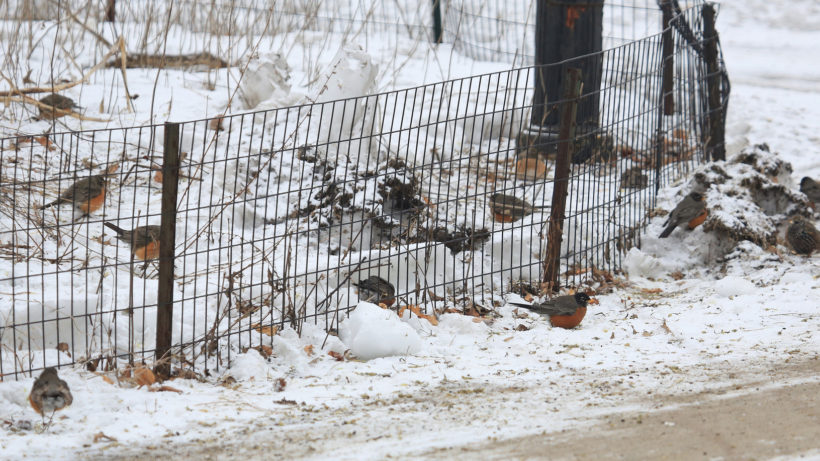
“In the wintertime robins are actually social,” Howard says. “They form flocks — all those eyes and ears are good for watching out for predators. And one of the beauties of flocking is that if one of them finds some food, it can call the rest.”
Even in freezing temperatures, robins can stay warm enough to make staying through the winter worthwhile. Those who remain near their mating grounds will get first dibs on the best nesting territories when spring arrives.
“Sometimes you see them and it’s so cold you think, ‘My goodness they’ll all die.’” Howard says. “It’s amazing, the way they survive winter is they fluff their feathers and get really big. Their internal temperature is 104° F and yet they can be in areas below freezing. That’s how well their feathers insulate them; there can even be a 100-degree difference just through those layers of feathers.”
If you want to observe robins in winter, try putting out water for them. They can survive on their own by eating snow, but birds always welcome a source of unfrozen water for drinking and bathing.
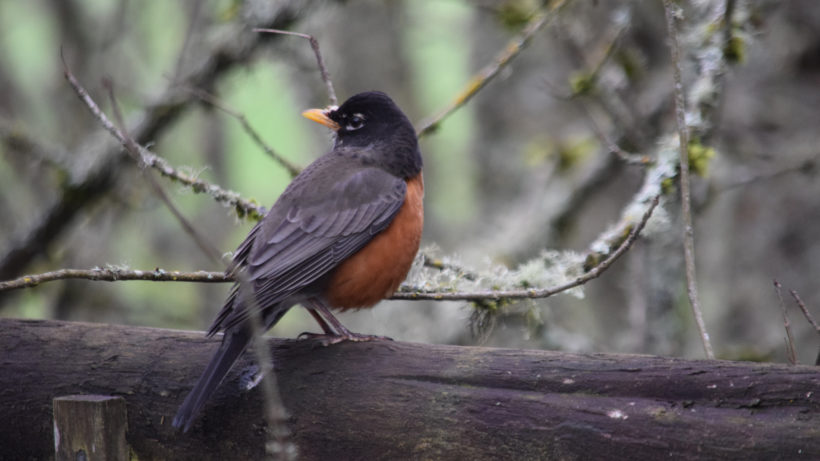
The First Robin of Spring
Robins haven’t been entirely dethroned from their poetic status as spring symbol. Though notions of spring vary by region and temperature. Some robin behaviors take place in step with the warming temperatures that people associate with the arrival of spring.
For instance, as temperatures warm in springtime, the bulk of the robin population follows a more reliable northward spring migration pattern.
“In the spring they migrate with a 36-degree isotherm,” Howard explains. “The ground thaws and that’s when traditional earthworms and some other insect larvae are available. That’s when you see big movements.”
More than anything, the robin’s song remains a reliable indicator that the first wave of spring migration has reached you. This song is one of the first signs that robins are switching from winter behavior to courtship and nesting behavior associated with spring.
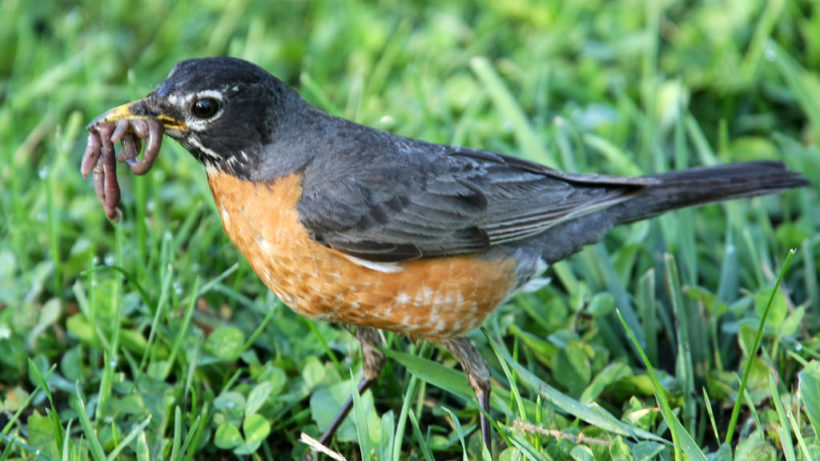
“We see a clear south to north progression in reports of territorial song,” Howard notes. “Across the continent, as males arrive on territory they begin to sing. That true robin song that you hear nonstop all day or certainly through the morning means your local male has arrived.”
Males arrive first to establish their territories – they will fight with their feet to defend them. In spring the males become so territorial that they’ve been known to beat themselves up while trying to fight their own reflection.
“Females arrive a couple of weeks later,” Howard says. “They’re not in a rush. Their job is to have fat stores as plentiful as possible. They don’t want to burn through calories by migrating too early. They need to be in good condition.”
Arriving too early can be bad for reproduction too. A spring freeze can damage the integrity of the nest.
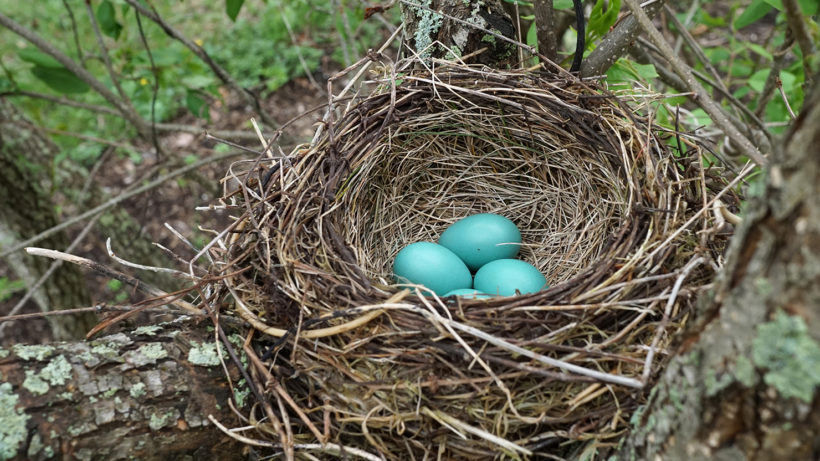
Only the females have a brood patch, an area of warm featherless skin that’s used to transfer body heat to the eggs. Females spend about 50 minutes of every hour on the nest during incubation. It’s two weeks from egg laying to hatching and robins will start a new nest within the month. Robins nest as many as four times each summer, depending on how far north they are.
As in winter, water is one of the best ways to attract robins to your yard in spring.
“If you turn on a sprinkler you’ll have robins within minutes,” Howard says. “It makes the soil soft and earthworms and other food easy to collect.”
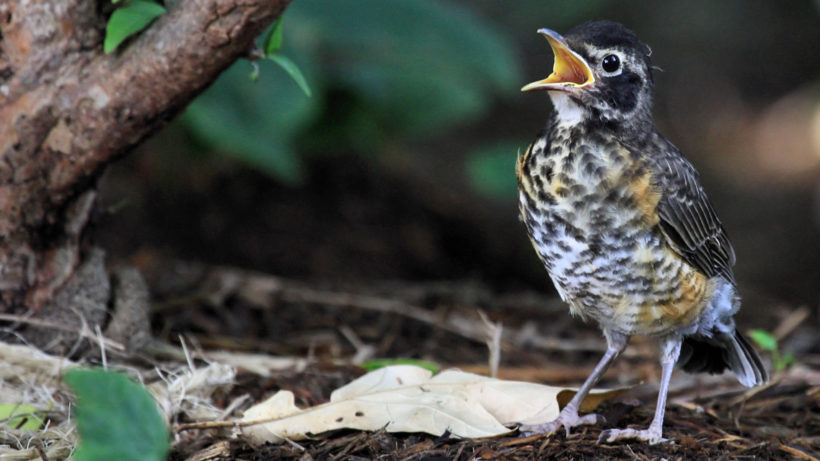
Report Your Robin Observations
You can report robin observations to Journey North all year round. As spring approaches, Journey North has a checklist of robin life cycle events to track and report:
- Over-wintering robins – watch for flocks.
- First male robin – you will know it is a male by his bold red breast and his dark head and back.
- First wave of robins – three or more robins together (but not in the winter) is a sign that migration is peaking.
- Average temperature reaches 36° F – help Journey North find out whether or not this is truly when robins sing.
- First earthworm – help Journey North find out if robin arrival is tied to earthworm availability.
- First robin song – listen for the robin’s true song.
- First female robin – she will look washed out compared to the male.
- First males in battle – they will be fighting over territories.
- Nest building begins – watch for males with a mouthful of nest materials or females with muddy breasts.
- Incubation underway – if you’re not seeing the female around anymore, she’s probably busy incubating.
- Young hatch – watch for adults flying with worms.
- First young fledge – fledglings don’t fly and have a spotted breast. You might see them on the ground or in low branches.
- First young take wing – within a few days of fledging watch for the juveniles to start their practice flights.
- Parents start another nest – when you see the male feeding the fledglings, but the female is absent, she has likely disappeared to incubate a new set of eggs.
“One of the great things about robins is they’re so accessible,” Howard says. “You can look out your window and see them. There’s so much to learn about such an unsung hero.”
Have you noticed unusual robin behavior in your neighborhood or? Share it in the comments and report your sightings to Journey North.
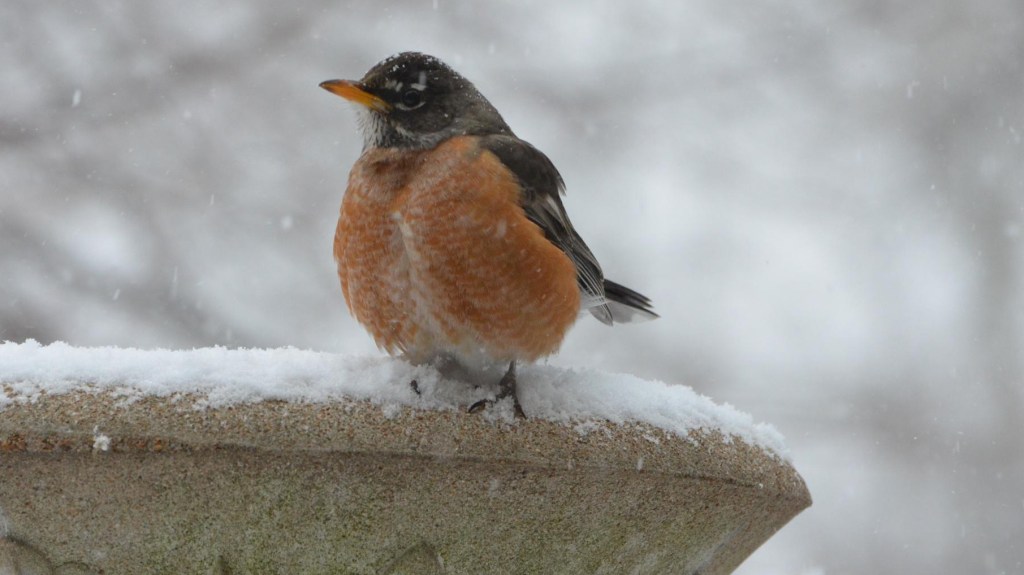


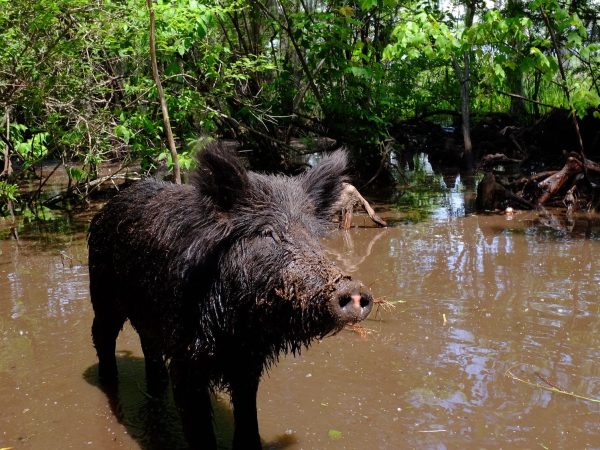
There are still Robin’s here Lindsay Ontario Canada
We first saw the Robin here in Illinois in February. Never had we seen one so early. Your article was very informative as we were wondering what they eat in the winter. Thought it was an omen on global warming.
I saw my first robin this year on March 14th, and every day since, sitting on top of the arbor. We live in southeast SD, the ground is covered in snow, and last night’s low dipped to zero.
In Walnut Creek California: Waves of huge flocks arriving to eat olives from my trees and ground during the first week of March. This was our first spring-like weather of the year . I wish they had arrived earlier as I have tons of olives Dec., Jan. and Feb. I was amazed they picked them clean down to bare pits! Makes for an easier clean up.
I found this article because I was curious about all the FEMALE Robin’s bobbin’ around my front and back yards. Pun intended
We live in Goderich on the east coast of Lake Huron. Suddenly this February we are seeing a large flock of robins eating through the snow on the ground and eating something in a tree.
Ralph Smith
Central PA – we had temps in teens and twenties with a 6 in snowfall the past two days and have been observing a large flock ( round) of 36 or so robins in and around our flowering crab . The fluffy birds are eating the crabapples and hanging out on our driveway and the ground close to the house foundation.
I have seen a small flock of robins here in Vermont! March 3rd 2022. There is 2 feet and more of snow everywhere. I worry about them surviving!
Also a mean temperature of -10 C and lots of Robins, Turkey vultures all winter and yellow finches!
We have had large flocks of Ribins since December 2021, it is now March 2, we have had an exceptionally cold winter in Nova Scotia Canada and many blizzards. I have only ever seen Robins in the spring when worms are moving. This seems odd.